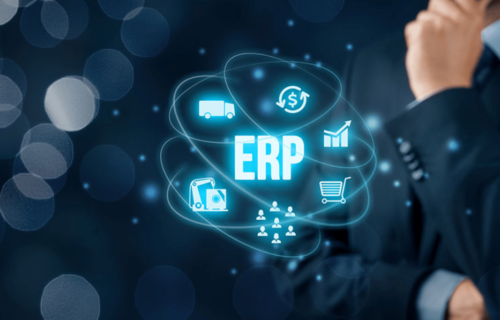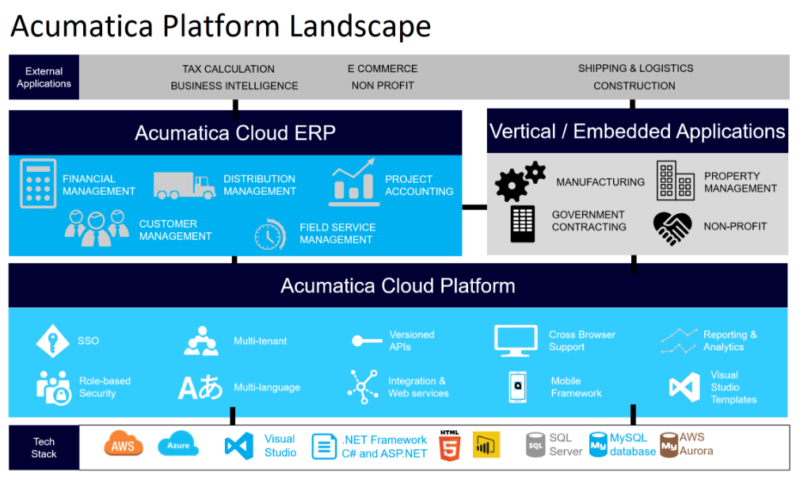Enterprise Resource Planning (ERP) solutions have emerged as indispensable tools for modern businesses, offering comprehensive management of core business processes in real-time.
In this article, we delve into the intricacies of ERP solutions, their benefits, key features, implementation strategies, challenges, and future trends.
Understanding ERP Systems
What is ERP?
ERP encompasses a suite of integrated applications designed to automate and streamline business operations, including finance, human resources, manufacturing, supply chain management, and customer relationship management. It provides a centralized database that facilitates data sharing across various departments, ensuring consistency and accuracy.
Components of ERP
Typical ERP systems comprise modules such as accounting, inventory management, procurement, project management, and reporting tools. These modules work in harmony to optimize workflows and enhance organizational efficiency.
Benefits of Implementing ERP Solutions
Increased Efficiency
By automating repetitive tasks and eliminating manual data entry, ERP solutions boost productivity, allowing employees to focus on value-added activities. Streamlined processes lead to faster decision-making and improved resource allocation.
Cost Reduction
ERP systems enable cost savings through inventory optimization, reduced lead times, and better resource utilization. By providing real-time insights into financial performance and operational metrics, businesses can identify areas for cost reduction and revenue enhancement.
Streamlined Processes
Integration of disparate systems into a unified platform minimizes data silos and promotes collaboration across departments. ERP facilitates seamless communication and data exchange, leading to faster response times and enhanced customer satisfaction.
Key Features of ERP Solutions
Integration
One of the defining features of ERP is its ability to integrate various business functions into a single system. This integration ensures data consistency and eliminates redundancy, enabling better decision-making and improved operational visibility.
Customization
ERP solutions offer flexibility to tailor the system according to specific business requirements. Customization options allow organizations to adapt the software to their unique processes and workflows, ensuring optimal performance and user satisfaction.
Scalability
As businesses evolve and grow, ERP systems must be capable of scaling to accommodate increased transaction volumes and user demands. Scalable solutions can adapt to changing business needs without significant disruption or re-implementation.
Choosing the Right ERP Solution
Assessing Business Needs
Before selecting an ERP solution, organizations must conduct a thorough assessment of their current processes, pain points, and future objectives. Understanding business requirements is crucial for identifying the most suitable software and vendor.
Vendor Evaluation
Selecting the right vendor is paramount to the success of ERP implementation. Businesses should evaluate vendors based on factors such as industry experience, reputation, product functionality, implementation support, and total cost of ownership.
Budget Consideration
ERP projects entail significant upfront costs, including software licensing, implementation services, training, and infrastructure. Organizations should establish a realistic budget and allocate resources accordingly to ensure a successful implementation within budget constraints.
Implementing ERP Solutions Successfully
Planning Phase
Effective planning is essential for a smooth ERP implementation. This phase involves defining project goals, establishing timelines, allocating resources, and engaging stakeholders. A well-defined implementation plan lays the foundation for a successful ERP deployment.
Training and Testing
User training is critical to ensure widespread adoption and maximize the benefits of ERP systems. Training programs should be tailored to the needs of end-users and conducted at various stages of implementation. Rigorous testing is also essential to identify and rectify any issues before going live.
Go-live and Support
The go-live phase marks the transition to the new ERP system. It requires careful coordination, extensive testing, and comprehensive training to minimize disruptions to business operations. Ongoing support and maintenance are vital to address any post-implementation issues and ensure the long-term success of the ERP solution.
Common Challenges in ERP Implementation
Resistance to Change
Resistance from employees is a common barrier to ERP adoption. Addressing resistance requires effective change management strategies, clear communication, and active involvement of stakeholders throughout the implementation process.
Data Migration Issues
Data migration is a complex process that involves transferring data from legacy systems to the new ERP platform. Inaccurate or incomplete data migration can lead to data integrity issues and operational disruptions. Thorough planning and data cleansing are essential to mitigate migration risks.
Lack of User Training
Insufficient user training can hinder ERP adoption and diminish its effectiveness. Organizations should invest in comprehensive training programs to ensure that employees are proficient in using the new system. Training should be ongoing and tailored to the needs of different user groups.
Future Trends in ERP Solutions
Cloud-Based ERP
Cloud-based ERP solutions are gaining popularity due to their scalability, flexibility, and cost-effectiveness. By leveraging the cloud, businesses can access ERP functionality anytime, anywhere, and benefit from automatic updates and scalability.
AI and Machine Learning Integration
AI and machine learning are transforming ERP systems, enabling advanced analytics, predictive insights, and automation of routine tasks. AI-powered ERP solutions can analyze large volumes of data, identify patterns, and generate actionable recommendations to drive business growth.
Mobile ERP Applications
Mobile ERP applications enable employees to access critical business data and perform tasks on the go. Mobile functionality enhances flexibility, productivity, and responsiveness, allowing businesses to stay competitive in today’s fast-paced market.
Conclusion
ERP solutions play a pivotal role in optimizing business operations, driving efficiency, and facilitating growth. By harnessing the power of ERP systems, organizations can streamline processes, enhance collaboration, and gain a competitive edge in the marketplace.
FAQs
What is ERP?
ERP stands for Enterprise Resource Planning, which refers to integrated software systems designed to manage core business processes such as finance, human resources, and supply chain management.
How does ERP benefit businesses?
ERP solutions offer numerous benefits, including increased efficiency, cost reduction, streamlined processes, and improved decision-making.
What factors should be considered when choosing an ERP solution?
When selecting an ERP solution, organizations should consider factors such as their specific business needs, vendor reputation, product functionality, and budget constraints.
What are the common challenges in ERP implementation?
Common challenges in ERP implementation include resistance to change, data migration issues, and lack of user training.
What are the emerging trends in ERP solutions?
Emerging trends in ERP solutions include the adoption of cloud-based ERP, integration of AI and machine learning technologies, and the development of mobile ERP applications.


